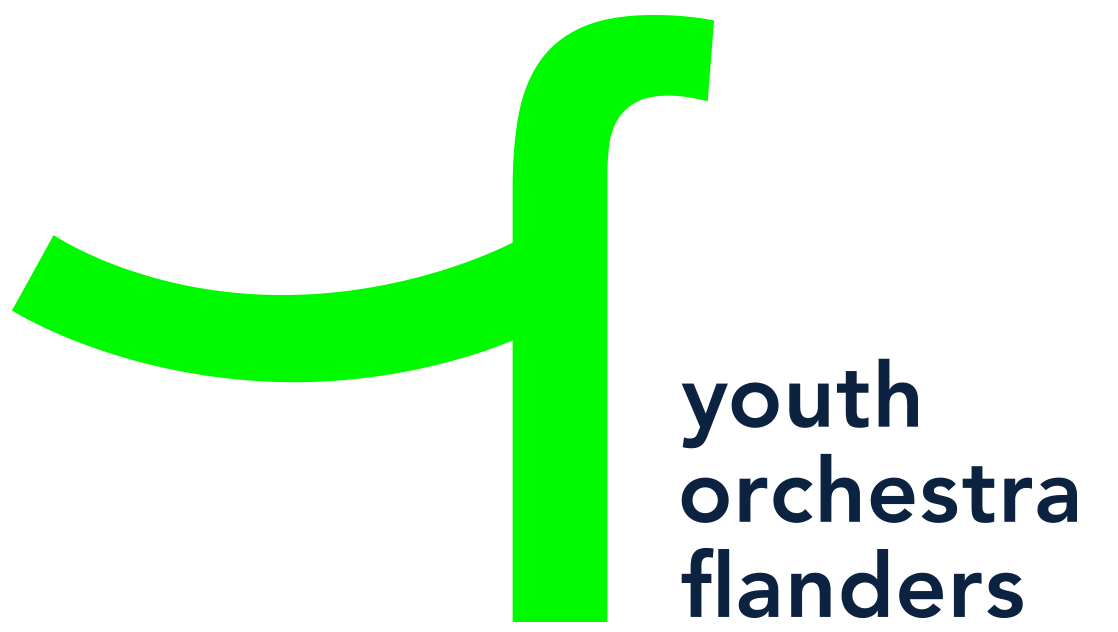Ludwig van Beethoven, Egmont Overture (9’)
Dmitri Shostakovich, Cello Concerto n.1 (28’)
Ludwig van Beethoven, Symfonie nr.3 “Eroica” (50’)
Youth Orchestra Flanders duikt in het weerwoord van componisten op onderdrukking en oppressie. Onder de ervaren leiding van Yoel Levi – voormalig muziekdirecteur van Brussels Philharmonic – en samen met cellist en winnaar van de beroemde Koningin Elisabethwedstrijd Victor Julien-Laferrière, brengt het orkest werken van Beethoven en Shostakovich.
Napoleon kroonde zichzelf tot keizer, wat leidde tot woede bij Beethoven: de componist schrapte de naam van de tiran uit de titelpagina van zijn Derde Symfonie ‘Eroica’. Kort daarna diende de onthoofding van Graaf van Egmont op de Grote Markt van Brussel als inspiratiebron voor Beethovens beroemde ouverture, die daarmee de graaf vereeuwigde als een symbool tegen het onrecht.
Eeuwen later tekende de botsing tussen Shostakovich en de onderdrukking van het Sovjetregime de componist voor altijd. Het Eerste Celloconcert van de getormenteerde componist is een van de meest hartverscheurende werken ooit geworden.
Beethoven & Sjostakovitsj
Ludwig van Beethoven (1770-1820) droeg de idealen van de Franse revolutie – vrijheid, gelijkheid en broederlijkheid – hoog in het vaandel en trok deze ook door in zijn muzikale ideeën. In de Corsicaanse veldheer Napoleon zag hij een messias die zou zorgen voor een meer rechtvaardige samenleving. Toen Beethoven in 1804 vernam dat zijn grote held zichzelf tot keizer van Frankrijk had gekroond, was zijn teleurstelling dan ook groot: “Is hij dus ook al niets dan een gewoon mens? Nu zal ook hij alle rechten met voeten treden, zich boven anderen verheffen, enkel zijn eerzucht koesteren, een tiran worden!” Woedend schrapte hij de naam van de tiran uit het titelblad van zijn Derde Symfonie ‘Eroica’ en verving die bij de publicatie in 1806 door de woorden ‘Sinfonia eroica, composta per festeggiare il sovvenire di un grand’Uomo’. Of hij met die grote man dan wel op Napoleon, hemzelf of het heldendom in het algemeen doelde, blijft in het midden. Zeker is dat zijn Derde Symfonie voor een revolutie zorgde in de muziekgeschiedenis.
Eenzelfde strijdvaardigheid weerklinkt in de triomfantelijke ouverture die Beethoven enkele jaren later componeerde bij Goethes theaterwerk Egmont, naar het noodlot van vrijheidsstrijder Graaf Lameraal van Egmont. Meer dan 450 jaar na zijn overlijden staat Egmont nog steeds symbool voor de opstand tegen elke vorm van onderdrukking. En als er één componist naar autonomie snakte, was het wel Dmitri Sjostakovitsj (1906-1975). Een heel leven lang botste de Russische componist tegen de beperkingen die het Sovjetregime aan kunstenaars oplegde. Tot ver na de dood van Stalin bleef Sjostakovitsj worstelen met het dilemma om in zijn composities de autoriteiten te behagen dan wel het pad van de vernieuwing in te slaan.
Een heroïsche symfonie
Toen Beethoven zich aan zijn Derde Symfonie zette, worstelde hij niet alleen met de heersende moraal en muzikale esthetiek van zijn tijd, maar voerde hij ook een innerlijke strijd tegen zijn toenemende doofheid. Al maakte de ziekte ook een zekere vechtlust in hem wakker: “Ik wil het noodlot bij zijn lurven grijpen, helemaal neerbuigen zal het mij zeker niet.” Met zijn Derde Symfonie voegde Beethoven daad bij het woord. Twee mokerslagen van akkoorden aan het begin van de symfonie luiden meteen de “nieuwe wegen” in die hij met zijn muziek wilde inslaan.
Toeschouwers wisten niet wat ze hoorden bij de eerste openbare uitvoering in het Theater an der Wien op 7 april 1805. De commentaren gingen van “een eigen gewaagde wanorde”, over “op veel plaatsen bont en bizar” tot “zo lang dat de luisteraar doodmoe de zaal verlaat”. Door de technische en esthetische conventies van de klassieke symfonie in de Eroica aan zijn laars te lappen, deed Beethoven de concertzaal op zijn vesten daveren. Aan de basis van de symfonie liggen geen mooi afgeronde melodieën, maar wel korte motieven die steeds verder ontwikkeld, verhaspeld en gecombineerd worden. Daarnaast staat het werk bol van – voor die tijd – dissonante harmonieën en metrische verschuivingen, en met een duur van ongeveer vijftig minuten was de symfonie dubbel zo lang als wat het publiek tot dan toe gewoon was. Het hele werk lijkt bovendien een buitenmuzikale gedachte te verklanken – die van het heldendom – waardoor de Derde Symfonie van Beethoven vooruit wijst naar de programmatische werken van laatromantische componisten als Berlioz, Strauss of Mahler.
Oproep tot vrijheid
Al van bij de aanvang van zijn theaterwerk Egmont, naar Graaf Lameraal van Egmont die op 5 juni 1568 onthoofd werd op de Grote Markt in Brussel, voorzag Goethe dat er nieuw gecomponeerde muziek bij zou klinken. Voor de voorstelling op 15 juni 1810 in het Weense Burgtheater vaardigde hij een compositieopdracht uit. De toenmalige directeur van het theater schreef daarop zijn stadsgenoot Beethoven aan. Die twijfelde geen seconde: hij was immers een grote bewonderaar van Goethe, en bovendien was hij ook de nationalistische thematiek genegen nadat Napoleon en zijn troepen Wenen in 1805 hadden bezet. Het bood hem de kans een kritisch licht te laten schijnen op de woelige politieke situatie.
Naast muziek bij de tekstpassages die al door Goethe aangeduid waren, componeerde Beethoven nog een ouverture en vier tussenspelen. De opvoering werd niet echt gesmaakt, waardoor het muziekstuk later nauwelijks nog in zijn geheel uitgevoerd werd. Enkel de ouverture zou de première overleven, als theaterstuk in miniatuurvorm. Ze schetst het verloop van het drama, van een tragisch en donker begin tot het jubelende einde in majeur: de vrijheidsgedachte leeft verder in de nabestaanden van de held. En ook vandaag, zo’n 450 jaar later, staat Egmont nog steeds symbool voor de opstand tegen elke vorm van onderdrukking.
Een virtuoos signatuurwerk
Vrijwel zijn hele leven werkte Sjostakovitsj onder het juk van het Sovjetregime. Na de Oktoberrevolutie in 1917 werden alle kunst- en cultuuruitingen aan banden gelegd. Stalin maakte het de kunstenaars nog lastiger. Hij eiste een totale onderwerping; wie het niet eens was met zijn bewind, verdween van de radar. De continue terreur maakte dat Sjostakovitsj in een tweestrijd leefde: enerzijds wilde hij uit angst om opgepakt te worden niet in conflict komen met de autoriteiten; anderzijds zou een totale overgave zijn creativiteit beperken. Toch ontvluchtte hij zijn geboorteland niet en wist hij zich tussen de eisen van het communistische bewind door te bewegen.
De dood van Stalin op 5 maart 1953 bracht niet meteen beterschap. Een zekere angst bleef nazinderen, en bovendien volgden lastige jaren op persoonlijk vlak. Sjostakovitsj’ vrouw Nina Vasilyevna overleed in 1954 aan kanker, en een nieuw huwelijk in 1956 hield maar drie jaar stand. In november 1959 kreeg Sjostakovitsj bovendien het slechte nieuws te verwerken dat de verlammingsverschijnselen aan zijn rechterhand het gevolg waren van een chronische ontsteking van zijn ruggenmerg. Hij zag zijn carrière als pianist in rook opgaan. Toch had hij dat jaar de energie gevonden om zijn Eerste Celloconcerto te componeren, opgedragen aan bevriend meestercellist Mstislav Rostropovitsj. De cellist zat er al jaren op te wachten en had er, op advies van zijn eerste vrouw Nina, nooit om durven vragen.
In het uiterst virtuoze werk weerklinken naast citaten uit eerdere symfonieën ook volkse thema’s – waaronder een parodie op het zogenaamde lievelingslied van Stalin in het laatste deel – en Sjostakovitsj’ persoonlijke muzikale signatuur D-Es-C-H (verwijzend naar zijn initialen ‘D. Sch.’) in tal van variaties. In het voorwoord bij de partituur schreef hij: “dit concerto met vier bewegingen is verdeeld in twee grote delen: de openingsbeweging en vervolgens nog drie delen zonder pauze. Samen vormen ze een integraal geheel met uniforme thema’s en beelden.” Rostropovitsj leerde de compositie op amper vier dagen tijd uit het hoofd, en nog datzelfde jaar bracht hij de première in het conservatorium van Leningrad. Niet veel later zorgde hij ervoor dat het celloconcerto ook in de Verenigde Staten onder luid applaus in première ging en op plaat opgenomen werd.
Toelichting door Aurélie Walschaert
Dirigent, Yoel Levi
Solist, Victor Julien-Laferrière
Repetities 20 > 23 maart, 2023
Violin 1
María Cotarelo García
Enric Moya Crespín
Kun Sun
Sophie Paeshuyse
Lotte De Munck
Anna Passetchnik
Sofia Nasibulina
Yuliia Gorbulinska
Eline Vanderpijpen
Juliette Janssen
Inês Diez
José Manuel Jiménez
Wannes D’haese
Violin 2
Eliana Schuermans
Francisco Ferreira
Lisa De Prins
Kasper Delrue
Hanon Inatomi
Ise Dolhain
Sumer Sanah Ullah
Merel De Coorde
Alexis Delporte
Bram Van Eenoo
Ekaterina Philippovich
Viola
David Blanco De Paz
Jutta Demuynck
Keren Wang
Nanxi Dong
Charis Neyens
Helena De Bruyn
Uliana Sharina
Inma Muedra Ventura
Cello
Juliette Eftekhari
Nicolas Vicente Antolin
Javier Costa
Vladislav Glushchenko
Margot Demeyere
Georges Moissonnier-Benert
David Penitzka
Pau Valls
Double Bass
Luzia Vieira
Shih-wen Lee
Fran Decloedt
Yubei Zhao
Fons Dobbelaere
Flute
Julita Burzynska
Célestine Wacquez
Clarisse Feliciano (pic)
Oboe
Laura Aranda
Raphaëlle Nenert
Clarinet
Moïra Michelazzo
Morena Quagliara
Bassoon
Rob Laethem
Diedelinde Buffel
Horn
Koen De Wael
David Quiles
Walmir Silva
Kato van Echelpoel
Trumpet
Daan Ubaghs
Marcel Degotte
Timpani
Remy Gouraud
Celesta
Lucia Arzallus
Vrij. 24 maart, 2023 – 20:15 | Brussel, Flagey
19:15 pre concert talk: Inneke Plasschaert & Victor Julien-Laferrière & Nicola Mascia (EN) (Foyer 2)
19:45 pop up concert: Youth Orchestra Flanders Chamber Project
20:15 concert (Foyer 4):
Ludwig van Beethoven, Egmont Overture (9′)
Dmitri Shostakovich, Concerto voor cello n°1 (28′)
break (20′)
Ludwig van Beethoven, Symphonie n°3 “Eroica” (50′)
Tickets
Bruxelles, Flagey Studio 4


